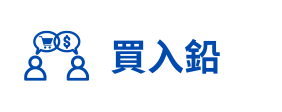Keyword optimization started simple during the early days of SEO. Making sure to insert the target keyword in the prominent parts of the content body as naturally as possible in a limited number of times. But simplicity led to a good number of SEOs abusing it with spammy and black-hat tactics that led to multiple algorithm changes that aimed to counter those. But with the advancements with Google’s algorithm and their machine learning, outdated strategies like the ones I’ve mentioned have become obsolete while being replaced by newer, more user-centric strategies that don’t rely on spammy tactics.
In this day and age of SEO, do keywords still hold
the same importance? How have the strategies for them changed? And how can you properly optimize your website to rank for them? All of them will be answered here.
Are keywords still important?
SEO Philippines Keyword
Simply enough, yes. Keywords are still important for SEOs even up to this day. But the gravity and weight of their importance have drastically changed from what we might know of. The use of keywords today has changed – from the simple act of placing them naturally inside the most prominent places of your page and its content to writing a piece of content targeting the keyword’s intent, not as straightforward as it used to be.
The importance of keywords today lies in the
fact that they’re still the guiding post on how your content should go – the tone of voice, the facts contained, and the overall topic you’re writing about. They also serve as one of the primary metrics to determine the success of our SEO – their page ranking on the first page for a specific keyword is one of the most used metrics by SEOs around the world.
To summarize, keywords are still important up to today. But its importance has greatly shifted from a simple, straightforward one to a more fundamental and overall technical approach. Keywords are not what they used to be, they’re much more complex and useful for the users searching for them. And as time goes by, it will continue to change and evolve to better serve the users around the world.
How to properly place keywords inside your pages this 2020
I wrote a tutorial a few years back on how to properly optimize for your keywords. I broke it down to two blog posts where I talked about Keyword Density and Keyword Prominence, proximity, and frequency. These tutorials deal with a lot of technical factors that could still be applied today, one of them being proper keyword placement. So, how exactly do you place your keywords inside your page?
Title Tag
Keyword in Title Tag
Title tags are one of the most important technical places where you need to put your keyword in. This is one of the first places that crawlers see since it’s up at the top of the page. This also signals to the search engines that this was the particular keyword you’re trying to target.
Meta Description
keyword in meta description
Another important place for your keyword is the meta description. Do note that this is confirmed to be an indirect ranking factor wherein Google does not use this as a factor to rank pages, but it does affect CTR or click-through rate, which is widely considered to be a ranking factor. So, alongside the title tag, it’s important for you to insert the keyword in the meta description as well since it’s a piece of content that is directly displayed in the search engine results pages.
Header
Keyword in Header
This has the same reason as the title Slovakia Business Email List tag wherein it’s one of the first pieces of code that the search engines crawl. Additionally, the header tag also serves as the title of the page so your target keyword needs to be placed here as well.
URL Slug
This is a simple one. Aside from signaling to the search engines that this is the keyword you want to rank for, having the keyword as your URL slug also simplifies the URL as a whole. So, instead of having a URL such as seo-hacker.com/blog/post-1997/, it would be best to have it as seo-hacker.com/seo-company-philippines/.
Body of Content
This is where it gets tricky since 買入鉛 this is where the change primarily happened. I’ve seen a lot of pages ranking on the first page of the SERPs where there isn’t any exact match mention of the keyword inside their body of content. What I believe matters is that you serve the right kind of content for the intent of the keyword. Of course, you have to provide information that is directly related to the keyword or topic you’re writing about, but this isn’t enough. You have to provide the RIGHT KIND of content for the keyword or topic as well.
Here’s an example: the keyword you’re trying to target is “flower delivery”. You can write a long blog post about how to get flowers delivered, what kinds of flowers can be delivered, etc. But incorporating specific products that users can go to will be of massive help in ranking first. Flower delivery is the type of keyword that is more navigational/transactional than informational. So, it stands to reason that the type of content you put out isn’t necessarily information but more of giving the users the products that they want to see.
One of the best ways I’ve found to determine the kinds of content that a keyword needs is to directly look at the top 10 results for that keyword. Do the results show mostly homepages? Product pages? Or blog posts. This will help you determine which kind of page you need to optimize to rank better for that keyword.
So, it’s not as important to focus on keyword proximity and density but it’s more focused on a user-centric ideal where serving them the content they WANT to see is what helps with ranking for keywords nowadays.
Key takeaway
Some of the foundational keyword optimization strategies a few years back is still applicable up to today – keyword placement. But the overall approach has changed over time as Google and other search engines have improved their machine learning and search algorithms. It has been said time and time again, but I’d like to reiterate that it’s more important with the users in mind than the search




